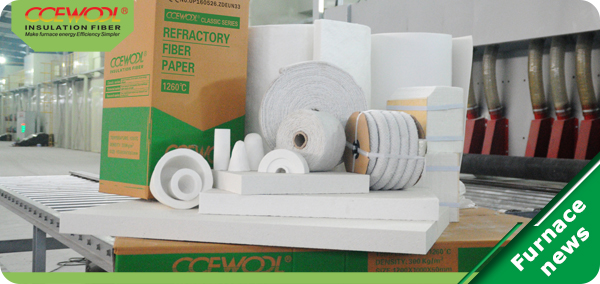
Jun. 25, 2018
CCEWOOL refractory ceramic fiber is a kind of fibrous lightweight refractory material. It has the characteristics of light weight, high temperature resistance, good thermal shock resistance, low thermal conductivity, small heat capacity, and mechanical vibration resistance. Its main application is in the metallurgy, machinery, petroleum, chemical, electronics and other industries.

The main properties of CCEWOOL refractory ceramic fiber are divided into 6 categories: heat resistance, thermal stability, thermal conductivity, sound absorption , chemical stability, elasticity and air permeability resistance.
1. Heat resistance
CCEWOOL refractory ceramic fiber is the third generation refractory material following the traditional heavy refractory bricks and unshaped refractory materials. It not only has the excellent thermal insulation performance of the material with low thermal conductivity, but also has excellent heat resistance for continuous work under high temperature.
The maximum use temperature of the fiber refers to the limit temperature that the refractory ceramic fiber can withstand in a short time, and is used to characterize the heat resistance of the refractory fiber. Take CCEWOOL 1260°C refractory ceramic fiber product as an example, its long-term working temperature is around 1000°C. Therefore, the concept of maximum use temperature is very important. It has a close relationship with the long-term working temperature and is the main reference in the application of fiber.
2. Thermal stability
The thermal stability of CCEWOOL refractory ceramic fibers is unmatched by any compact or lightweight refractory material. Generally, dense firebricks will crack, exfoliate and break after several times of rapid cooling and heating. The refractory ceramic fiber product is a porous product composed of fibers 2 to 5 μm in diameter intertwined with each other. Even if the temperature changes rapidly, it will not produce peeling, but also can resist bending, twisting and mechanical vibration. Therefore, theoretically it is not subject to any sudden changes in temperature.
3. Thermal conductivity
Static air is an excellent thermal insulation material with low thermal conductivity and low thermal capacity. The refractory ceramic fiber has near-air thermal conductivity because the refractory fiber is a hybrid structure composed of solid fiber and air, and the porosity is over 90%.
The above is the first three points of the six major performances of CCEWOOL fire-resistant ceramic fiber. It is hoped that it will help the builders of the furnace construction. In the next period, we continue to introduce the last 3 points of the 6 main performances of CCEWOOL refractory ceramic fibers. Stay tuned!
